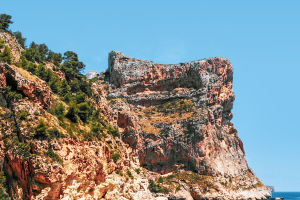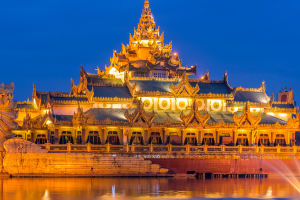Picture misty dawns unfolding across emerald hills, horns gleaming in golden rays. Three parks stand out in Eswatini's wild tapestry: Mlilwane, Mkhaya, and Hlane.
Each reserve offers unique encounters with rhinos, antelopes, and majestic herds. Lykkers, are you ready to track these giants on foot, by cycle, and from open‑roof vehicles? Adventure awaits every curious heart.
Trip Prep
Start by securing travel insurance from SafetyWing, approx. $55 annually, covering park activities. Pack lightweight thermal layers, a waterproof jacket, and neutral‑tone attire to blend with the landscape. Allocate $12 for a full course of antimalarial tablets. Convert currency at local banks in Mbabane or carry USD for ATM withdrawals; daily cash needs average $60.
Getting Around
Self‑drive from Mbabane proves both flexible and cost‑effective. A one‑way bus ticket runs about $4, though routes seldom reach park gates. Guided day tours start at $120 per person, including transfers, but lack flexibility.
Distances: Mbabane to Mlilwane is 35 km (30 min), to Mkhaya 65 km (1 h), to Hlane 85 km (1.5 h).
Mlilwane Park
As Eswatini's first sanctuary, Mlilwane blends conservation with adventure. Entry costs $16 per adult, valid 6 am–6 pm. The park hosts Red Hartebeest, Roan Antelopes, and waterbuck herds amid winding trails. Guides narrate local ecology on $25 walking tours. Absence of predators—save for a few crocodiles—allows safe cycling along 20 km of gravel tracks.
Mlilwane Stay
Accommodation includes rondavels from $75 per night and "beehive" huts at $90. Some units operate off‑grid, so pack a headlamp for after‑dark strolls. Self‑catering kitchens feature basic utensils and communal fridges. Book directly through the lodge website for a small discount; confirmation typically arrives within three days.
Mkhaya Reserve
Mkhaya's flagship offering is a 24‑hour rhino immersion. Packages from $360 per person cover dinner, bed, breakfast, three open‑vehicle drives, and a guided walk. Pickup occurs at pre‑assigned coordinates at either 10 am or 4 pm, after which a river crossing marks park entry. Reserve spans 11,000 hectares, with rhino sightings often exceeding five individuals.
Mkhaya Stay
Rustic cottages lack walls and windows yet feature cozy bedding and solar lanterns. Luggage is limited to 10 kg, carried by ranger escort. The 24‑hour window concludes at 10 am next day, with a final drive returning to pickup coordinates. Advance reservations are advised at least six weeks out, as slots fill quickly in high season.
Hlane Park
Hlane stands as the oldest and largest reserve in Eswatini, covering 30,000 hectares. Entry fee is $25 per adult; gates open 7 am–5 pm. The park is divided: one zone for lions and black rhinos, another for white rhinos and elephants. Expert rangers lead drives at 6 am and 4 pm, maximizing wildlife sightings under crisp sunrise and sunset light.
Hlane Stay
Main campsite offers twin‑share chalets from $110 per night plus a $20 service levy. Select chalets feature grid electricity and en‑suite bathrooms. Full board meals cost $18 for lunch and $25 for dinner. Reservations via the lodge email yield responses within 48 hours. Early booking ensures preferred room type and dining arrangements.
Safari Tips
Aim for sunrise drives at 5:30 am when animals stir. Layer clothing and rent a thermal blanket on request ($15/day). Binoculars ($10/day) enhance distant views of grazing herds. Position wide‑angle lenses for group shots of antelopes under open skies. Maintain silence and stillness to draw wildlife curiosity without spooking.
Safety Notes
Always heed ranger guidance and remain inside vehicles except in designated zones. Secure tents or cabins nightly to prevent wildlife forays. Pack a basic first‑aid kit and carry purified water from filtration tablets ($20 kit). Keep mobile devices silent to preserve the natural soundscape and avoid startling animals.
Conservation Note
Royal patronage has propelled Eswatini's wildlife programs to global acclaim. Mlilwane's antelope numbers increased by 30% over five years. Mkhaya records a 20% annual rise in calf births. Hlane's segmented enclosures have slashed poaching incidents by 40%. Visitor fees directly fund anti‑poaching patrols and habitat restoration.
Booking Tips
Peak season runs May through September; secure all reservations 3–4 months ahead. Off‑peak stays from November to March often include 15% price reductions. Reconfirm lodging, transfers, and dietary needs 14 days before arrival to ensure a seamless safari.
Conclusion
Which park beckons most strongly: antelope‑lined trails, rhino‑centric immersion, or lion‑guarded domains? Share plans or reflections with fellow explorers. Ready to chart your own Eswatini safari odyssey and support vital conservation efforts? Pack gear and let the wild welcome you.


